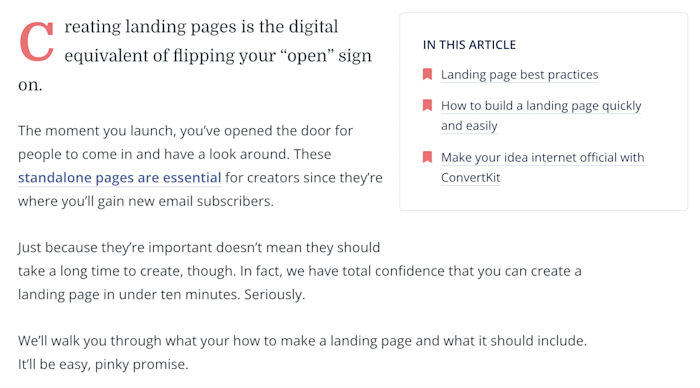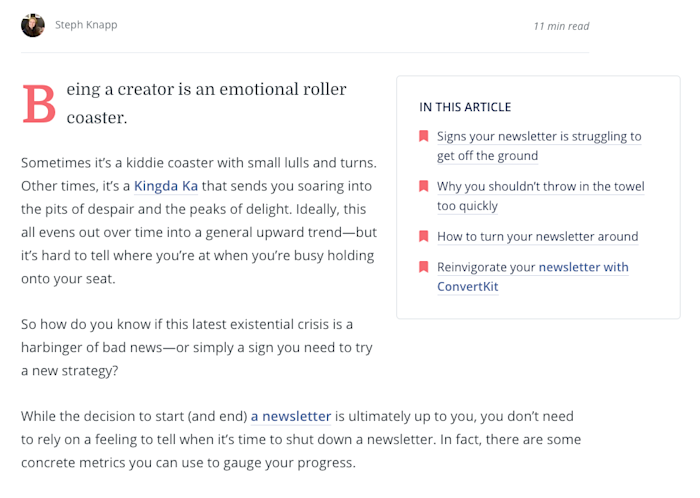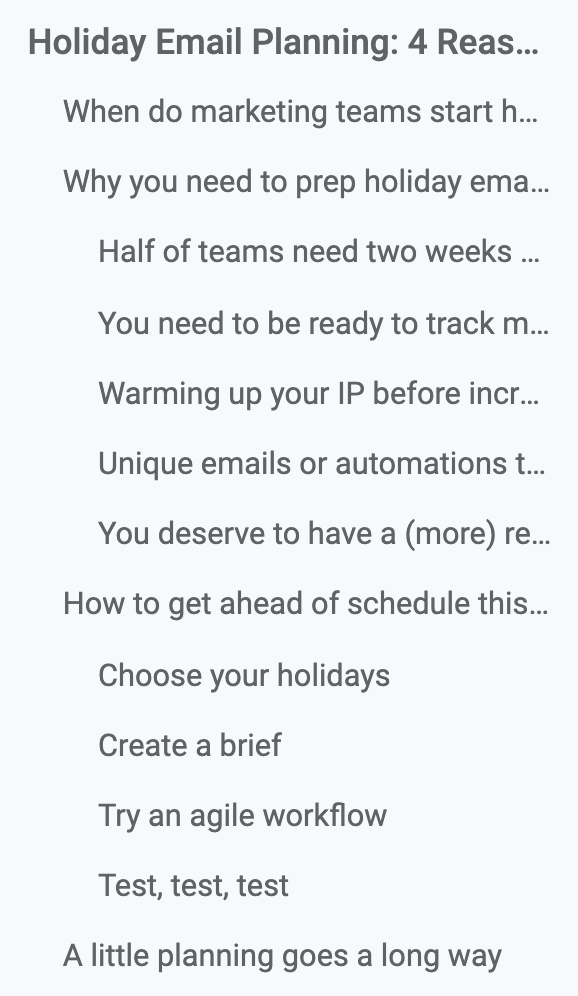We’ve all seen the stats about how our attention spans are akin to that of a goldfish. It’s a bit insulting, but also beside the point.
Whatever is taking our attention—whether it be our fish brains, mountains of available content, or juggling our everyday lives—marketers have to find a way to make engaging information.
Raise your hand if you’ve ever faced the advice to “make it a video.”
I’m not saying that’s a bad idea. I’m just saying that…I don’t want to make a video. Learning a new skill set, investing in equipment and software, and sacrificing valuable SEO power aren’t always options for teams. Especially if you’re a content marketing party of one who isn’t keen on realizing *that’s* what your voice sounds like to everyone else.
Writers of the world, listen up. There are ways to make your work more enjoyable so you can increase time on page, conversions, and all the other metrics you hold so dear.
5 ways to get your point across quickly
If I had to summarize all of the tips for making long-form content more engaging, my advice would be: make it a choose-your-own-adventure story. You can research search intent all you want, but only the reader knows what info they’re after.
You can (and should) put all of the information in, but not every person needs every point. So, make it easy for them to take what they need and leave what they don’t. Here’s how.
1. Write a catchy intro
First impressions matter. An intro that hooks the reader and sets expectations about what’s to come can go a long way in helping them see the content through to the end. If the first few lines are boring or confusing, it might send a message that the rest will be too.

It’s tough to be charming on command, though, so it helps to have a few go-to templates. Some of my favorite ways to start a blog post include:
-
Writing one strong sentence with a comparison or play on words
-
Posing and answering a question
-
Addressing fears or challenges
No matter which format you choose, make sure it’s interesting and relevant. The intro should set up the perspective or angle of the rest of the post, and it’ll stand out (in a bad way) if you slap a cliche in and never reference the theme again.
2. Create a “jump ahead” section
Right after (or beside) your catchy intro, you need to hand readers the steering wheel. A linked table of contents makes it fast for people to find whatever they’re interested in. It also gives them an idea of what’s coming up, which hopefully intrigues them enough to check it out.

I create a linked table of contents for every ConvertKit post I write. It helps to wait until the draft is just right before making your list, in case you end up shuffling sections around. Luckily, most content management platforms have built-in tools to create a dynamic table of contents. If yours doesn’t, you can use anchor links to set one up manually.
3. Create a story with your subheaders
I’m going to say something that may sting your writer’s heart a little: people might not read your words.
If you’re only going to get a few minutes of attention, then you have to find a way to pack in as much value as possible. My solution? Make your headers act as Cliffs Notes.
In the editing process, read through your headers to see how well they summarize the content. If an H2 poses a question, do the H3s answer it? If you mention that there will be a certain number of points, are each of the points covered?
The easiest way to review your subheader scannability (yes, it’s a word) is to turn on document outline previews.

Above is the outline preview of a recent Litmus post I wrote—it’s what I use to ensure readers still get the critical info if someone only sees the headers. Remember, the goal is to help your reader, not force them to read something they don’t want to read.
4. Call out action points at the end of each section
Another way to make your long-form content valuable on the run is to pull out your action points. Read through each section of the post and ask, “why would someone care?” or “what should someone do with this information?”

For example, in addition to listing the pros and cons of different customer research incentives, I summarized when someone should use each method. Even a single sentence that connects the points you’ve made or gives someone a task to put on their to-do list makes the content more actionable and valuable—even if they don’t read every word.
5. Break up text with quotes
My final tip for creating engaging content that doesn’t lull people to sleep is breaking up the text with visuals. But since finding relevant images or creating unique graphics can be tough, my two-for-one is using expert quotes.

Quotes from subject matter experts add depth to the content and allow even non-designers to pack a visual punch. Adding a quote can be as simple as centering and italicizing text and adding a contributor’s image. You can also create contrasting text blocks like Hotjar does.
P.S. If you’re short on time, use Listen Notes to search for podcast transcriptions for your topic. You might find a pre-existing quote to work in.
Keep the reader top of mind
There’s a lot of consideration that goes into every piece of content you write. Each piece likely has a few objectives, too. Keep the person at the other end top of mind, no matter where you’re writing in the conversion funnel or content calendar.
Writing informative and actionable content that’s big on value and small on fluff is the perfect way to honor your readers’ time.
[adsanity_group align=’alignnone’ num_ads=1 num_columns=1 group_ids=’15192′]
Need Any Technology Assistance? Call Pursho @ 0731-6725516







